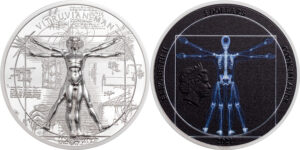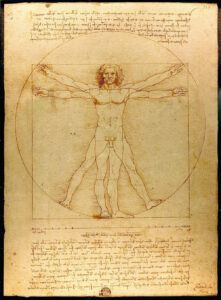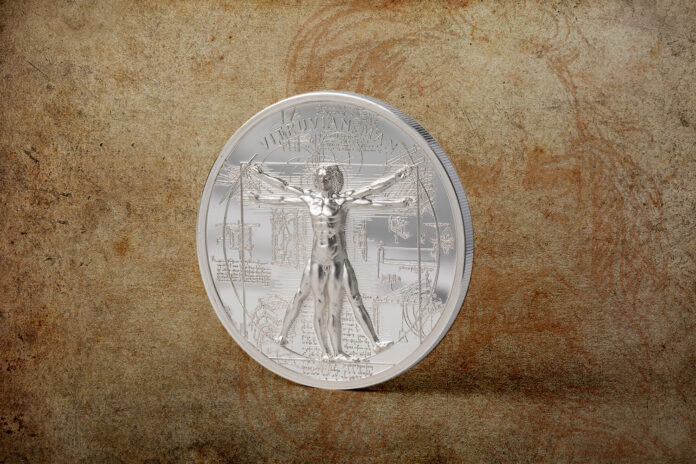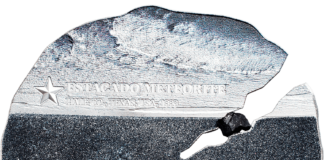With their newest coin CIT combines in an outstanding way a masterpiece of the renaissance, the Vitruvian Man from Leonardo ca Vinci, with one of the most important innovations of medical, the discovery of X-rays.

Description of the Coin
One side depicts the Vitruvian Man as we know him from a drawing by Leonardo da Vinci; in the background elements from Leonardo da Vinci’s note books; above the legend VITRUVIAN MAN.
The other side depicts an X-ray scan of the Vitruvian man in white and blue against a black background; in the field left the portrait of Queen Elizabeth II, around it the legend ELIZABETH II – 5 DOLLARS – COOK ISLANDS – 2021, on the uncolored rim X-Ray.

Background
In the years between 1485 and 1490, Leonardo da Vinci created an ink drawing that is known today as the Vitruvian Man. The brilliant artist used it to illustrate a hypothesis that had been put forward by the Roman architect Vitruvius in the first century AD and that was enthusiastically adopted in the Renaissance period: an ideal building resembles a well-formed human body. The center of the human body is the navel, Vitruvius stated. If one drew a circle around the navel, the extremities would lie exactly on the line while, at the same time, one could draw a square using the body height and the arm width as measurements of the sides.
The Renaissance period thus made the human being the measure of all things in architecture as well. Therefore, a perfect building could only be made of a floor plan and façades that were exclusively composed of circles and squares.
Five years before Leonardo created his famous drawing, the first public dissection of the German-speaking area took place at the University of Cologne. It was a first step on a path that led to natural scientists understanding and describing how the miracle of the human body worked. An important step towards modern medicine was the discovery of X-rays by Wilhelm Conrad Röntgen. The imaging technique demystified the human body and reduced it to a machine that could be repaired whenever a part was broken or worn off.
CIT Coin Invest combines these two very different perceptions of the human body on a coin by means of state-of-the-art technology. Whereas one side has an ultra-high relief thanks to smartminting® technology, the other side is colored and reproduces the depiction of the first side as if it were an X-ray scan.
This commemorative coin revolves around the philosophical question of what the human body is: the measure of all things, like Leonardo da Vinci thought, or a wonderful machine that occasionally needs to be repaired, as it is treated by modern doctors.
Further information about the coin can be found on the website of CIT.
If you want to fully understand the three-dimensionality of this coin, you have to watch this film:
The Vitruvian Man is also depicted on the 1 euro-coins of Italy.
Read here more about Leonardo’s famous drawing and the significance of the “Vitruvian Man”.
Do you need a quick reminder of how X-rays see through your skin?
More coins from CIT can be found on CoinsWeekly and in the Cosmos of Collectibles archive.





